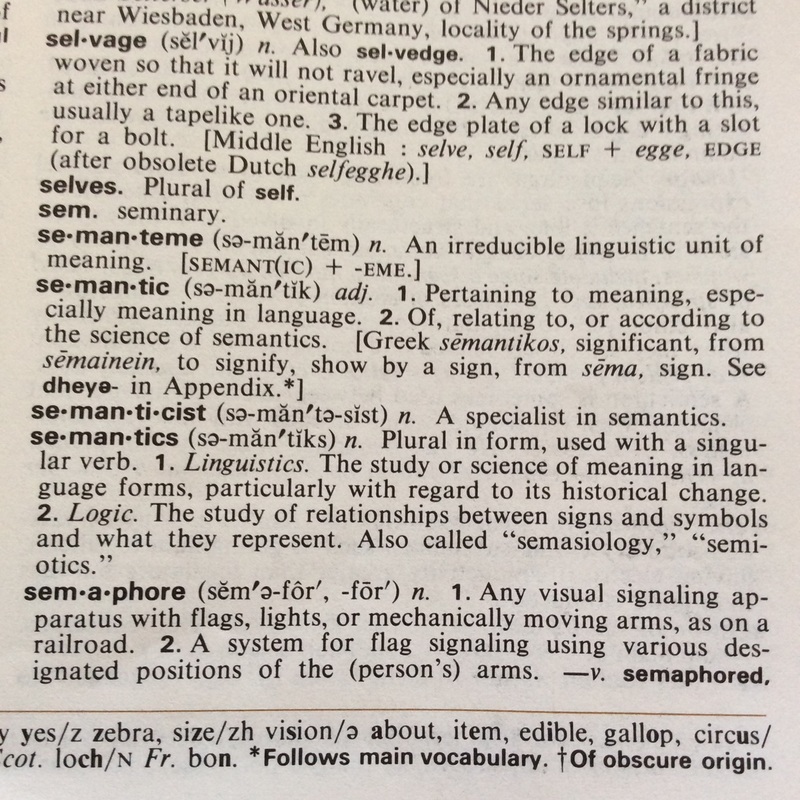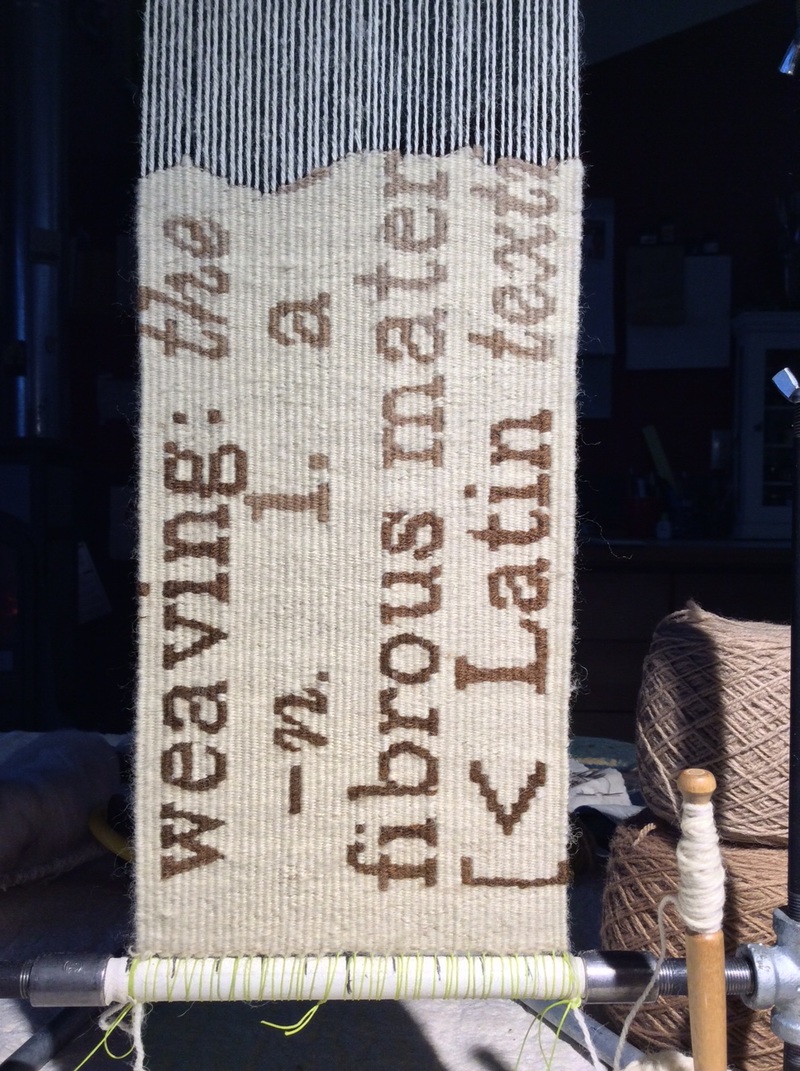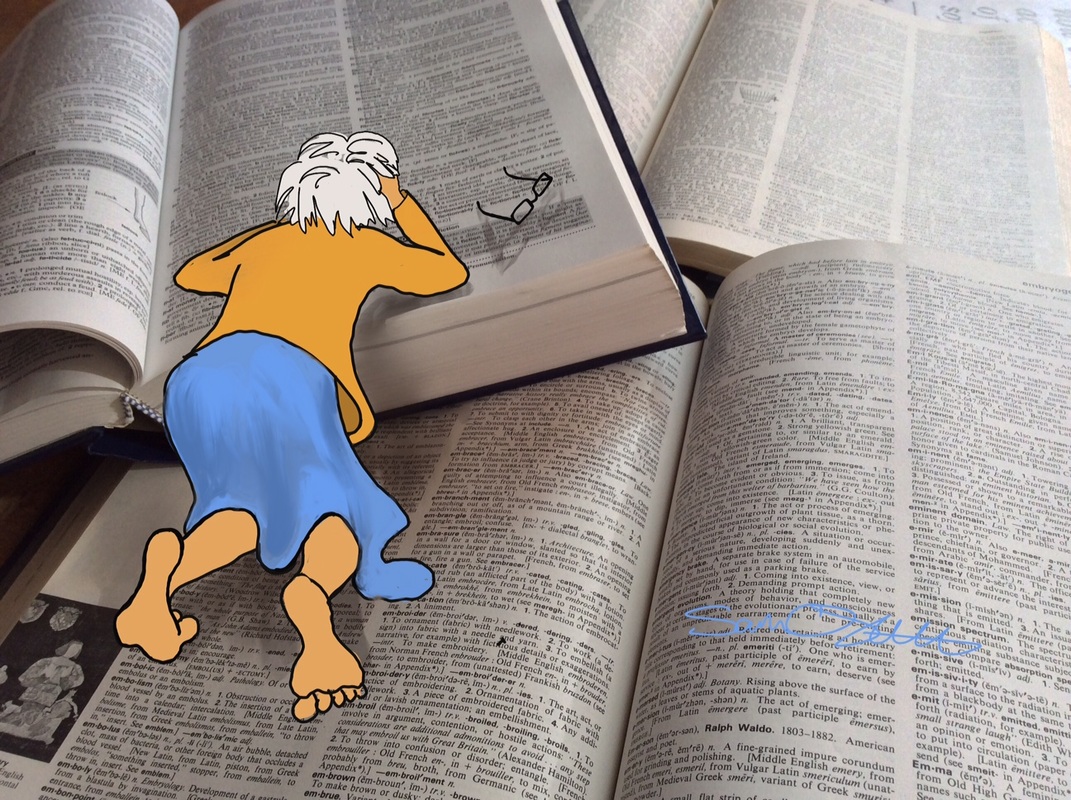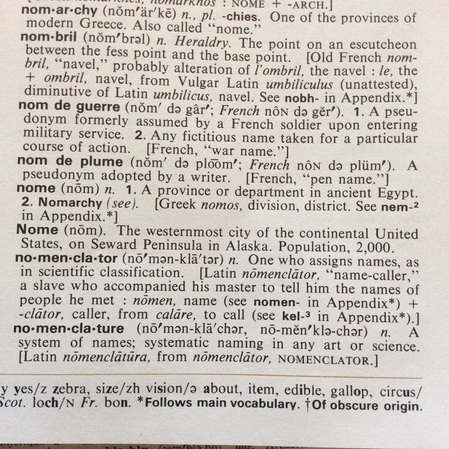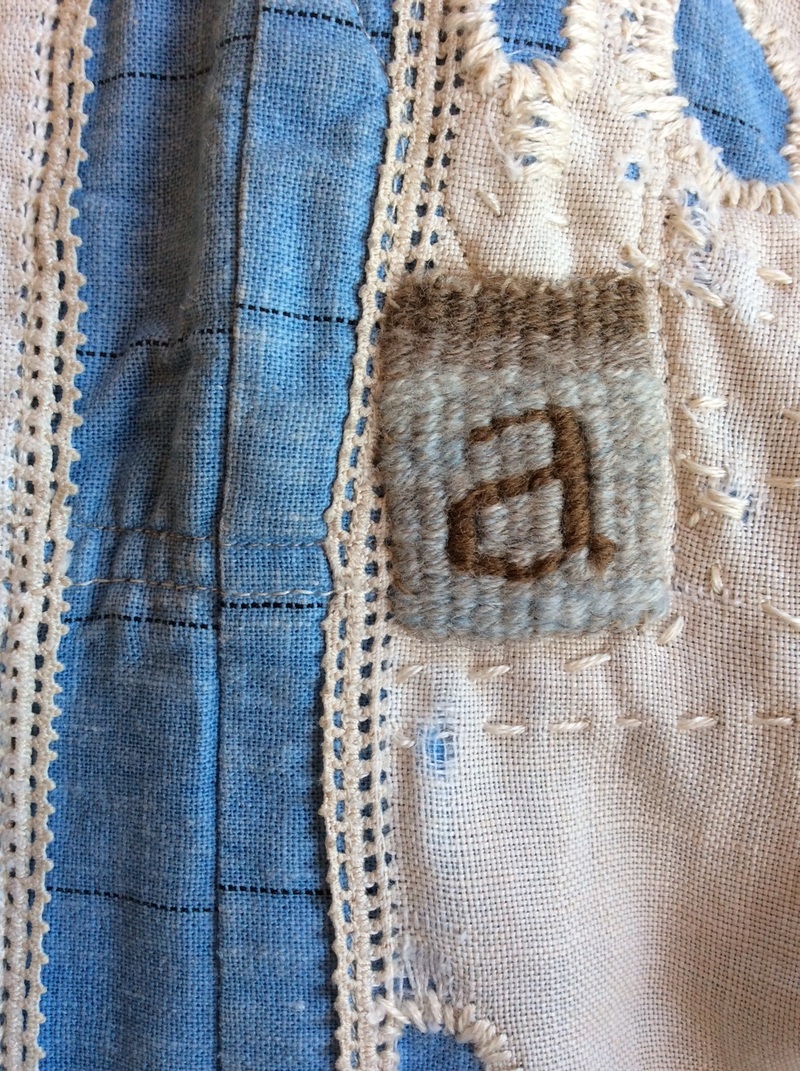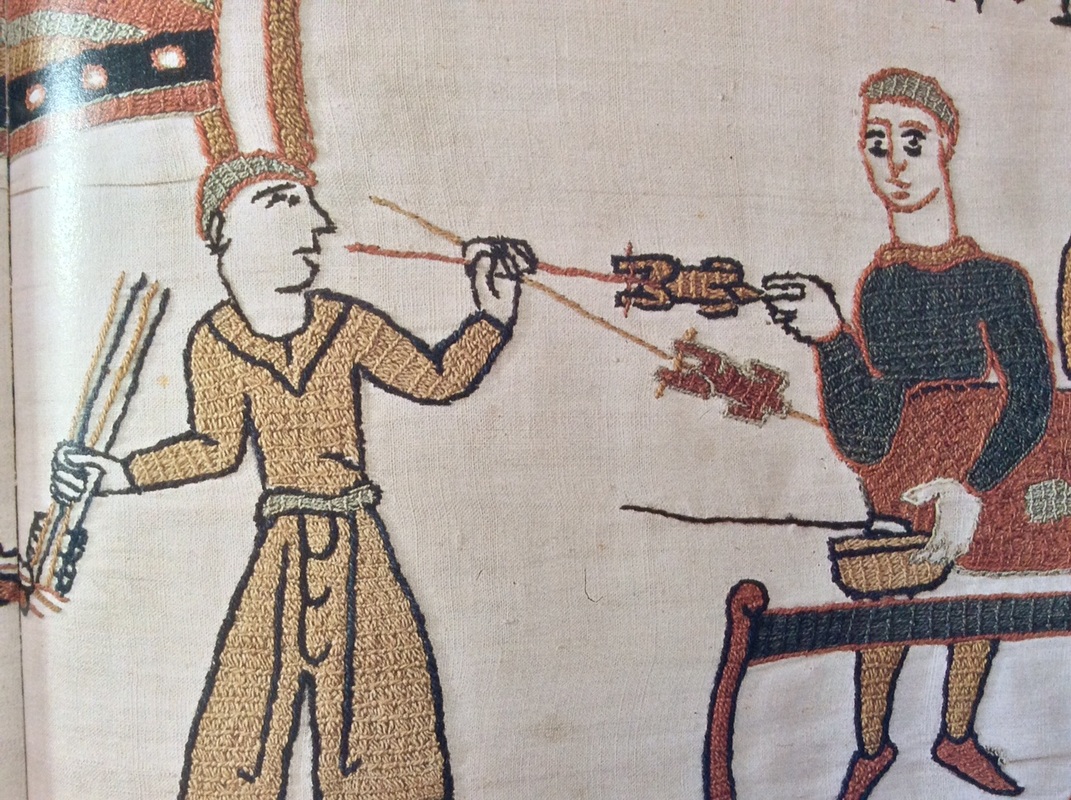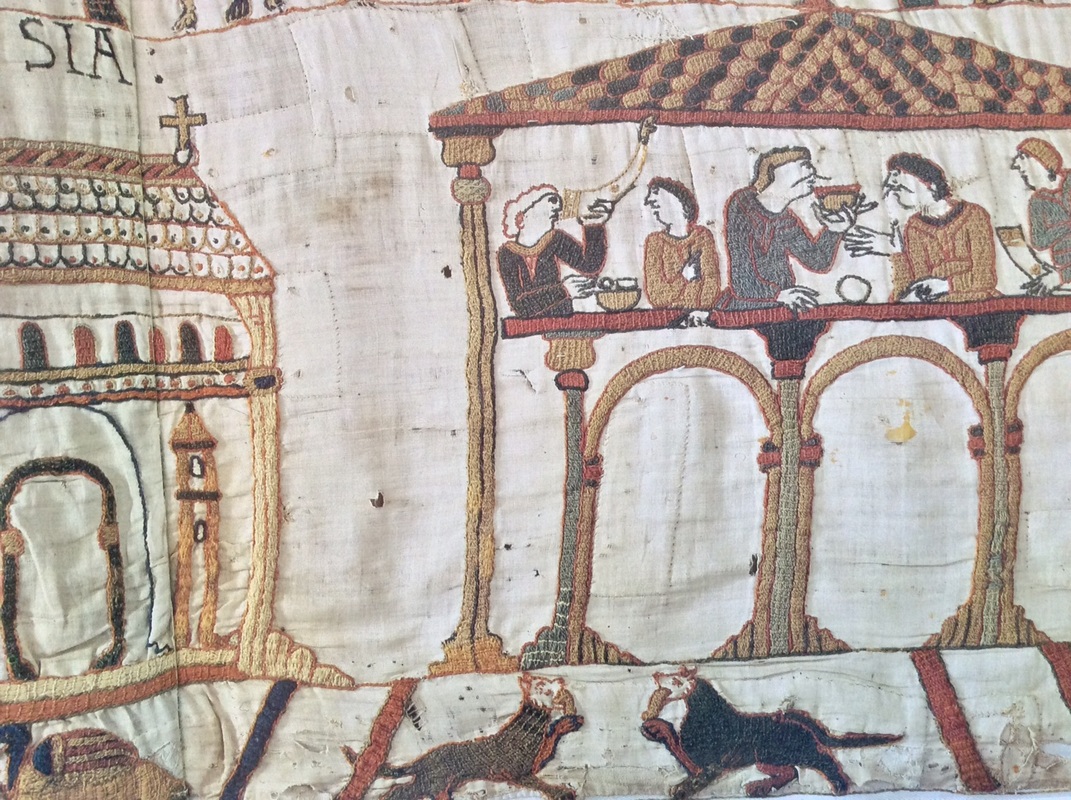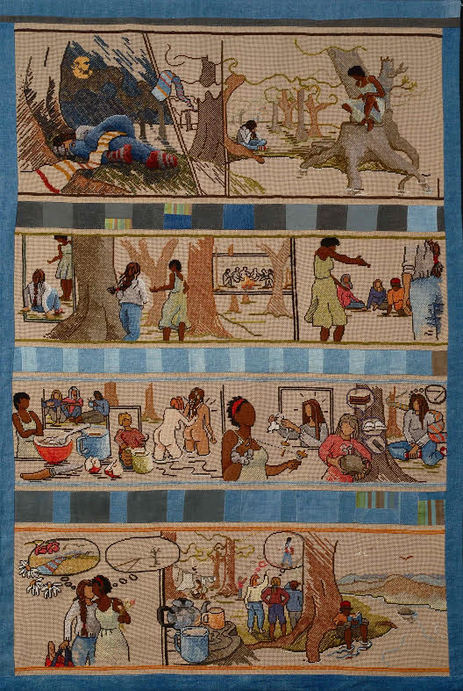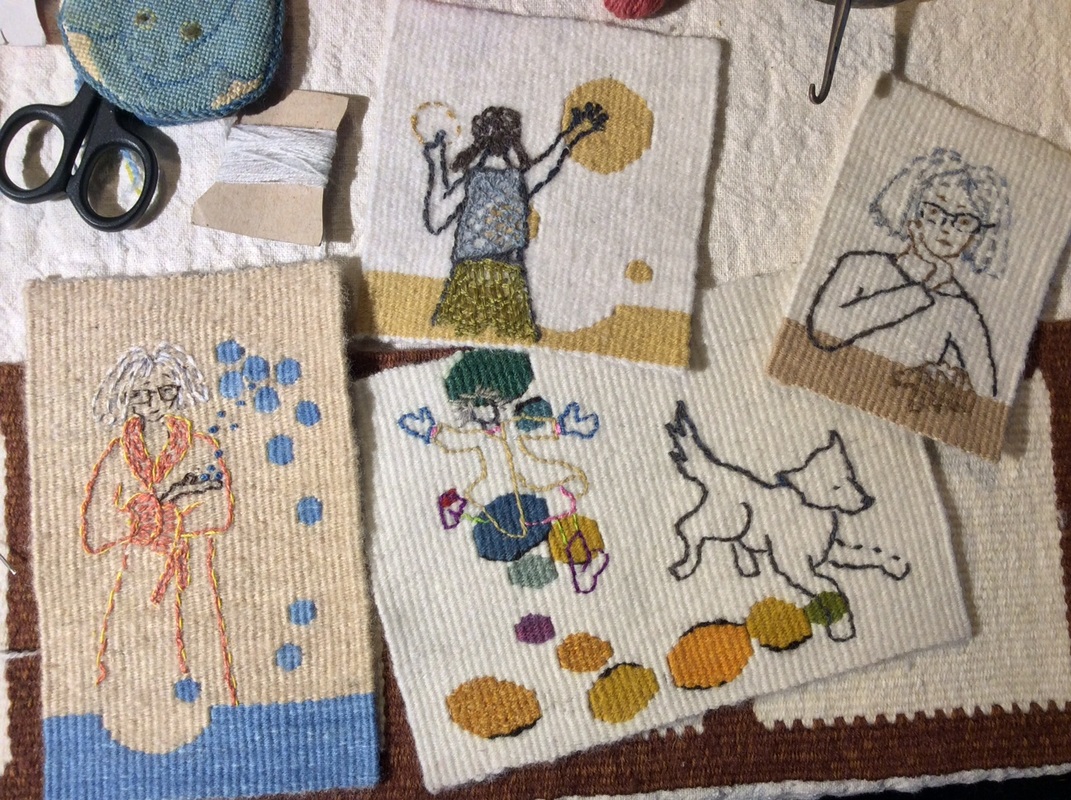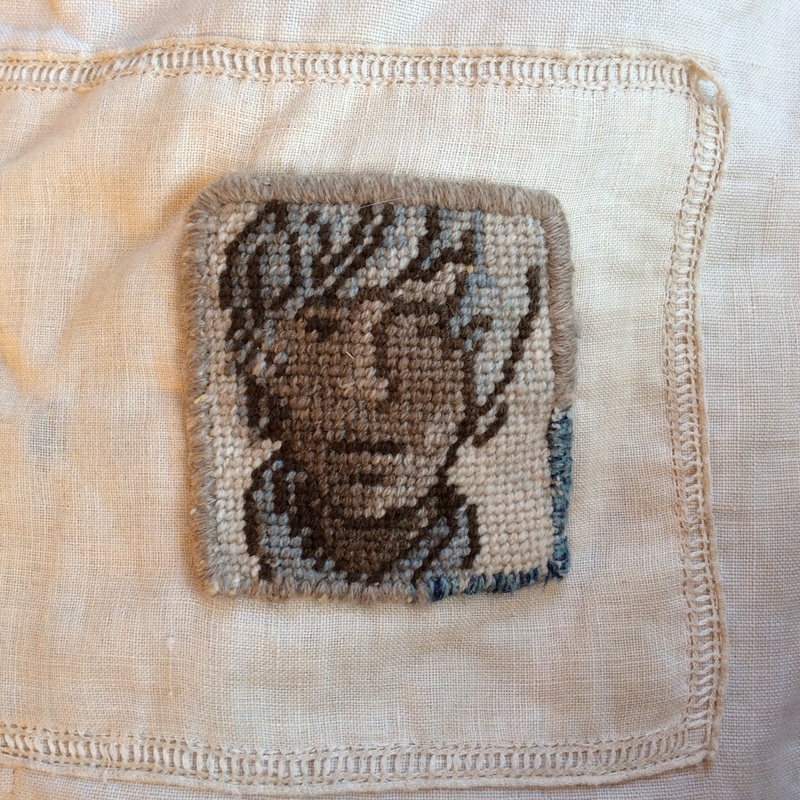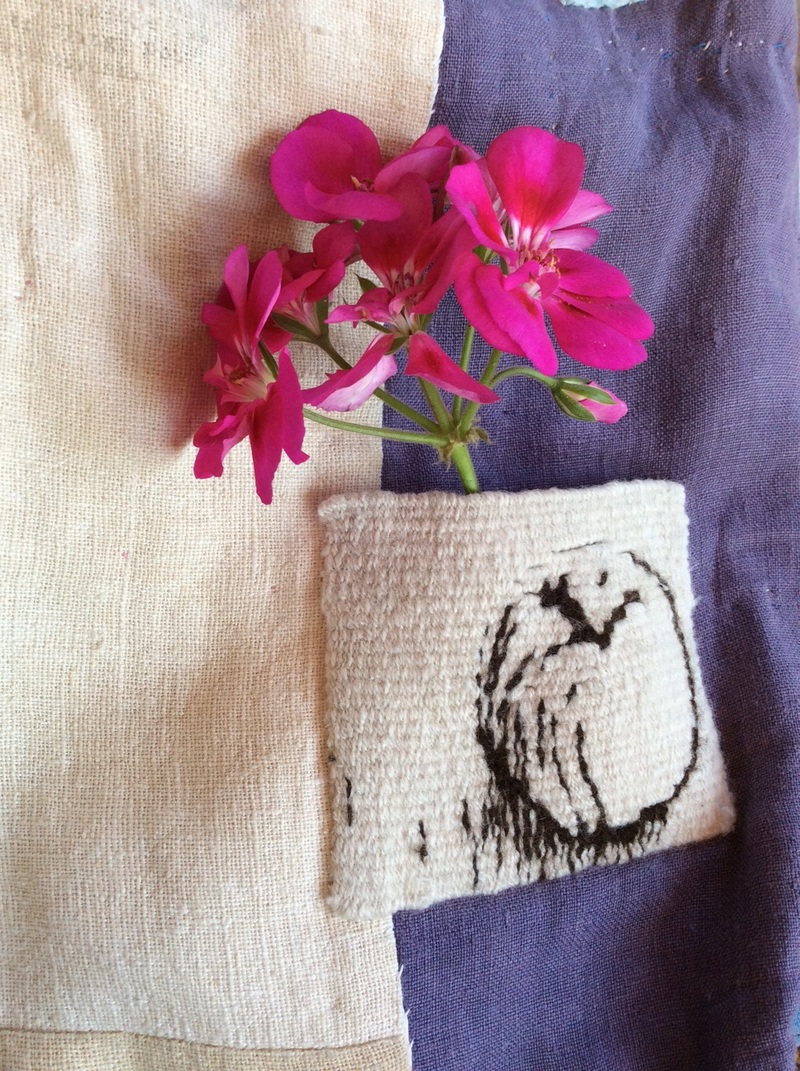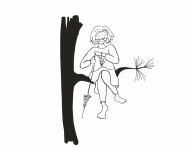| Note to self: Next time I teach at a textile conference ask for a no.men.cla.tor (Latin meaning) to follow me around so I won't embarrass myself when name tags are backwards, or hung too low for subtle inspection Note to everyone else: the Apple computer dictionary does not know this word. |
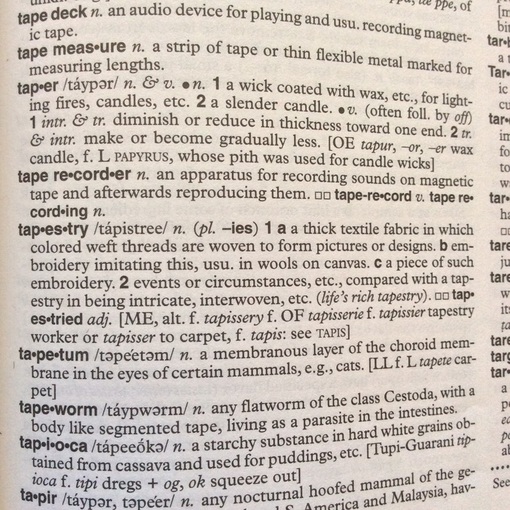 from The Oxford American Dictionary and Language Guide; Oxford University Press 1999
from The Oxford American Dictionary and Language Guide; Oxford University Press 1999 Word choice
in the realm
of textiles
however,
not to mention
the medium
of tapestry
where
nomenclature
and
semantics
duke it out daily,
is not a topic
to be tackled
by the
faint of heart.
Tapestry weaving: A weft faced, woven cloth with discontinuous wefts, usually plain weave.
The Wikipedia entry begins like this:
"Tapestry is a form of textile art, traditionally woven on a vertical loom. However, it can also be woven on a floor loom. It is composed of two sets of interlaced threads, those running parallel to the length (called the warp) and those parallel to the width (called the weft); the warp threads are set up under tension on a loom, and the weft thread is passed back and forth across part or all of the warps. Tapestry is weft-faced weaving, in which all the warp threads are hidden in the completed work, unlike cloth weaving where both the warp and the weft threads may be visible. In tapestry weaving, weft yarns are typically discontinuous; the artisan interlaces each coloured weft back and forth in its own small pattern area. It is a plain weft-faced weave having weft threads of different colours worked over portions of the warp to form the design."
And of course there is Other Wikipedia entry for Tapestry:
"Tapestry is the second album by American singer-songwriter Carole King, released in 1971 on Ode Records and produced by Lou Adler."
or wandering into the world of jacquard
where history has been stitched into linen for nearly 1000 years,
the word tapestry more firmly fixed with every gorgeous thread.
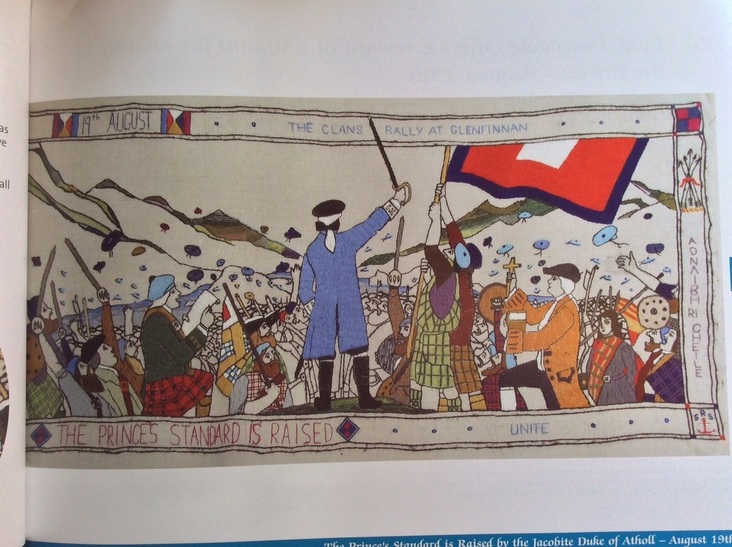 The Prestonpans Tapestry 1745: Andrew Crummy, dorie Wilkie, Gillian Hart; Gordon Prestoungrange and The Stitchers; Prestoungrange University Press with Burke's Peerage & Gentry for The Battle of Prestonpans 1745 Heritage Trust; 2010
The Prestonpans Tapestry 1745: Andrew Crummy, dorie Wilkie, Gillian Hart; Gordon Prestoungrange and The Stitchers; Prestoungrange University Press with Burke's Peerage & Gentry for The Battle of Prestonpans 1745 Heritage Trust; 2010 The Prestonpans Tapestry 1745
The Great Tapestry of Scotland
The French Shore Tapestry (Conche, Newfoundland, Canada)
Then there is Needlepoint,
the medium of choice for my Grandmother
and also a favorite of mine.
But of course they all are real.
I know it can make things awkward to have several media employ the same word,
and don't doubt there are always issues involving status, or perceived lack thereof
(Please don't think what I do has any relation to that," whatever 'that' might be).
But embracing all the meanings makes life less exclusive, less 'us and them.'
It also makes naming things easier.
The word Tapestry, then, allows me to be specific and general at the same time.
And calling myself a Tapestry Weaver gives me
the freedom of limitation inherent in the structure
as well as some built-in elbow room for experimentation,
which is how I work best.
and I love how such words can glow with the patina of centuries
even as the things we do with them changes daily.
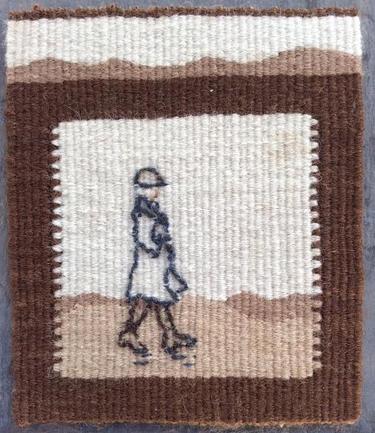 Walking the Walk (detail) 5" x 4.25"; tapestry; embroidery; wool; indigo ©Sarah C. Swett 2015
Walking the Walk (detail) 5" x 4.25"; tapestry; embroidery; wool; indigo ©Sarah C. Swett 2015 I also love the specificity of these words, and the astonishing things when the specific action implied by the word is coupled with unexpected approaches -- some of the blackwork I've recently seen on Pinterest, for instance, is astonishing.
Of course it may be that my passion for tapestry, sewing, knitting, embroidery and other such rich words is because I am writing them on blog, on a computer, through the internet and my soul longs for and clings to the things over which I have some control, have been here for a long time and most importantly, reference yarn.
Because I do love yarn.
Which in turn reminds me that
despite all these ways of messing around with ideas,
all work is new
and all work is old
and ideas keep going round and round.
And perhaps that is what semantics is about.
